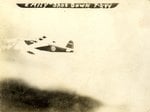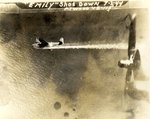GrauGeist
Generalfeldmarschall zur Luftschiff Abteilung
While reading up on the Bv222 (I've always liked the large flying boats) I saw a mention about a battle between a Bv222 and a PB4Y and tried to imagine the epic slugfest between these two monsters.
We always discuss the battles between fighters and while doing so, they bring to mind images of the aerobatics that these machines went through to get their enemy into the crosshairs...but for two leviathans to square off must have been an incredible sight!
This battle (really can't call it a dogfight) happened on 23 October, 1943 over the Bay of Biscay between a Bv222 V4 of Aufklärungsstaffel (See) 222 and a PB4Y-1 (BU #63917) of VB-105.
I haven't been able to dig up more details other than the fact that the crew of the PB4Y were lost (10 MIA)
It would be interesting to see if there is more documented battles between giants that occurred during the war (all theaters)
Blohm Voss Bv222
![Bv222[650x451].jpg Bv222[650x451].jpg](https://ww2aircraft.net/forum/attachments/bv222-650x451-jpg.211432/)
We always discuss the battles between fighters and while doing so, they bring to mind images of the aerobatics that these machines went through to get their enemy into the crosshairs...but for two leviathans to square off must have been an incredible sight!
This battle (really can't call it a dogfight) happened on 23 October, 1943 over the Bay of Biscay between a Bv222 V4 of Aufklärungsstaffel (See) 222 and a PB4Y-1 (BU #63917) of VB-105.
I haven't been able to dig up more details other than the fact that the crew of the PB4Y were lost (10 MIA)
It would be interesting to see if there is more documented battles between giants that occurred during the war (all theaters)
Blohm Voss Bv222
Last edited:


